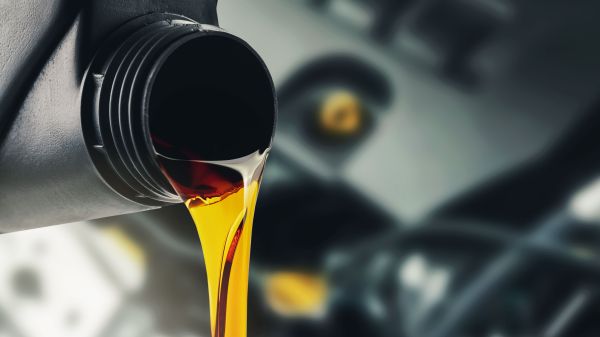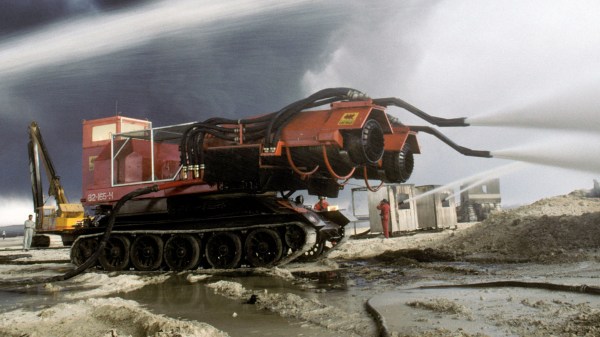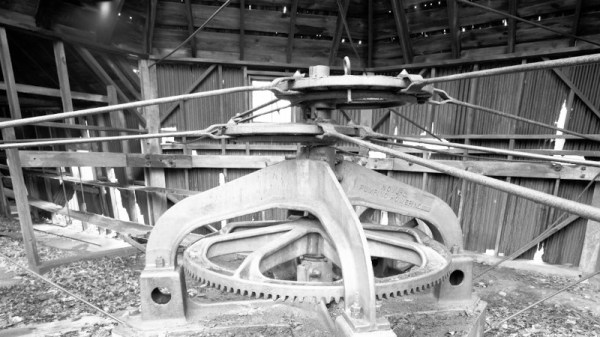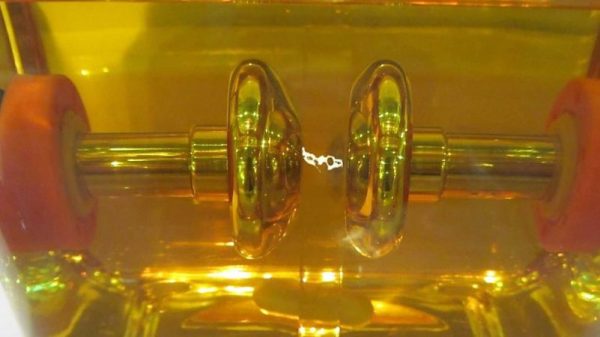Anyone who has ever had the misfortune of a blown head gasket knows that the old saying “oil and water don’t mix” is only partially true. When what’s coming out of the drain plug looks like a mocha latte, you know you’re about to have a very bad day.
[SpankRanch Garage] recently found himself in such a situation, and the result was this clever vacuum dehydrator, which he used to clean a huge amount of contaminated hydraulic fluid from some heavy equipment. The machine is made from a retired gas cylinder welded to a steel frame with the neck pointing down. He added a fill port to the bottom (now top) of the tank; as an aside, we had no idea the steel on those tanks was so thick. The side of the tank was drilled and threaded for things like pressure and temperature gauges as well as sight glasses to monitor the process and most importantly, a fitting for a vacuum pump. Some valves and a filter were added to the outlet, and a band heater was wrapped around the tank.
To process the contaminated oil, [Spank] glugged a bucket of forbidden milkshake into the chamber and pulled a vacuum. The low pressure lets the relatively gentle heat boil off the water without cooking the oil too badly. It took him a couple of hours to treat a 10-gallon batch, but the results were pretty stark. The treated oil looked far better than the starting material, and while it still may have some water in it, it’s probably just fine for excavator use now. The downside is that the vacuum pump oil gets contaminated with water vapor, but that’s far easier and cheaper to replace that a couple hundred gallons of hydraulic oil.
Never doubt the hacking abilities of farmers. Getting things done with what’s on hand is a big part of farm life, be it building a mower from scrap or tapping the power of the wind.
Continue reading “Scrapyard Vacuum Dehydrator Sucks The Water From Hydraulic Oil”

















